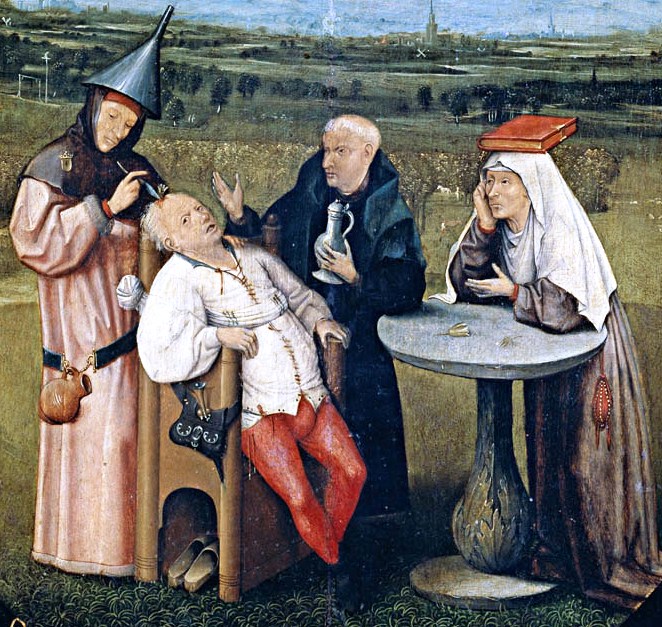

Trepanation (also known as trephination) is a surgery in which a hole is drilled into the skull.
History of Trepanation
Dating back 7,000-10,000 years, trepanation is the world's oldest surgical procedure. More than 1,500 trepanned skulls have been unearthed from the Neolithic period. Trepanation was performed all over the world, including Mesoamerica, Ancient China, East Africa, and Europe. There's even evidence that trepanation was performed on a cow in France!
Trepanation has many purposes. In the Neolithic era, it was practiced as emergency surgery after head wounds, to remove shattered bone fragments fromt he skull and clean out the blood. It was also historically used as treatment for epilepsy, mental disorders, and allegedly, headaches, though the evidence that this is effective is debatable. I think it depends why your head hurts, but I will discuss that later.
In Modern Medicine
Trepanation resurfaced in the 20th century in the form of the prefrontal leucotomy, in which a hole was cut into the skull and an instrument was inserted to scramble the brain. I do not recommend doing this!! The prefrontal leucotomy was soon replaced by the transorbital lobotomy, which enters the brain through the eye socket.
In modern medicine, trepanation is still practiced as a treatment for epidural and subdural hematomas, as well as to monitor the pressure in the brain. These days, they call it a craniotomy.These are the ways that doctors with medical degrees practice trepanation. However, it is not only performed by doctors, which brings me to my next section...
Self-Trepanation
"After some time there was an ominous sounding schlurp and the sound of bubbling. I drew the trepan out and the gurgling continued. It sounded like air bubbles running under the skull as they were pressed out. I looked at the trepan and there was a bit of bone in it. At last!"
- Joey Mellen, Bore Hole (1970)
Beginning in the early 1960s, independent researchers became interested in the benefits of trepanation. Though it gets a bad reputation these days as a primitive and dangerous surgery, it can be performed quite safely and has various benefits.
Researchers theorize that trepanation increases the flow of blood to the brain, enhancing cerebral metabolism. Bart Hughes, a major proponent of this theory, drilled a hole in his head in 1965 with a dentist's drill. Hughes pioneered the idea that since the bones of children's skulls are not fully closed, the opening of one's skull returns one to a childlike, whimsical state of consciousness. This is anecdotal, but I have felt this effect to a great degree after my own trepanation.
Joey Mellen, whom I've quoted above, trepanned himself in 1970 and detailed his experience in the autobiography Bore Hole. His partner, Amanda Feilding, the coolest lady ever, also trepanned herself with a drill the same year, documenting the procedure in the short film Heartbeat in the Brain, the entirety of which is, unfortunately, lost media. Right after drilling a hole in her skull, she went out to dinner with her friends. She claimed to feel the full force of her heartbeat in her head, calming her thoughts and stimulating her intelligence. Years later, she had the hole expanded in Mexico.